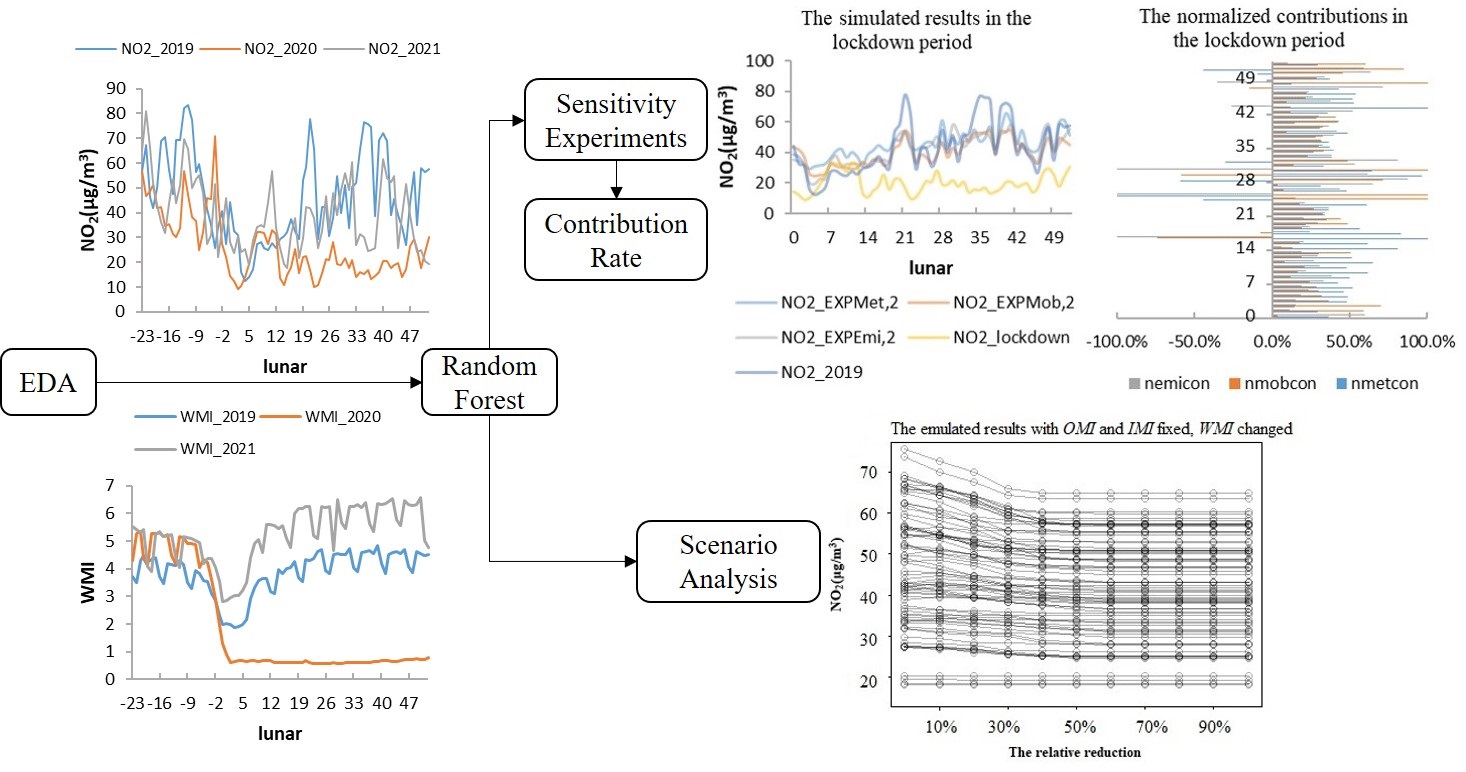During the COVID-19 lockdown in Wuhan, transportation, industrial production and other human activities declined significantly, as did the NO2 concentration. In order to assess the relative contributions of different factors to reductions of air pollutants, sensitivity experiments were implemented by random forest (RF) model, with the comparison of contributions of meteorology, road traffic, and emission sources between different periods. Besides, an emulator was operated to suggest an appropriate limit for control of transportation. The RF models showed different mechanisms for air pollutants. Within-city Migration index (WMI) was more important in the normal, pre-lockdown and post-pandemic model while Out-Migration Index (OMI) was emphasized in the lockdown model. In the COVID-19 lockdown period, 73.3% of the reduction can be attributed to the decreased road traffic, showing massive impact of road traffic on the air quality. In the post-pandemic period, meteorology controlled about 42.2% of the decrease and emissions from industry and household controlled 40.0% while road traffic only contributed to 17.8%. It was suggested that priority of restriction should be given to road traffic within the city. A limit of less than 40% on the control of the road traffic can get a better effect, especially for cities with severe traffic pollution.

